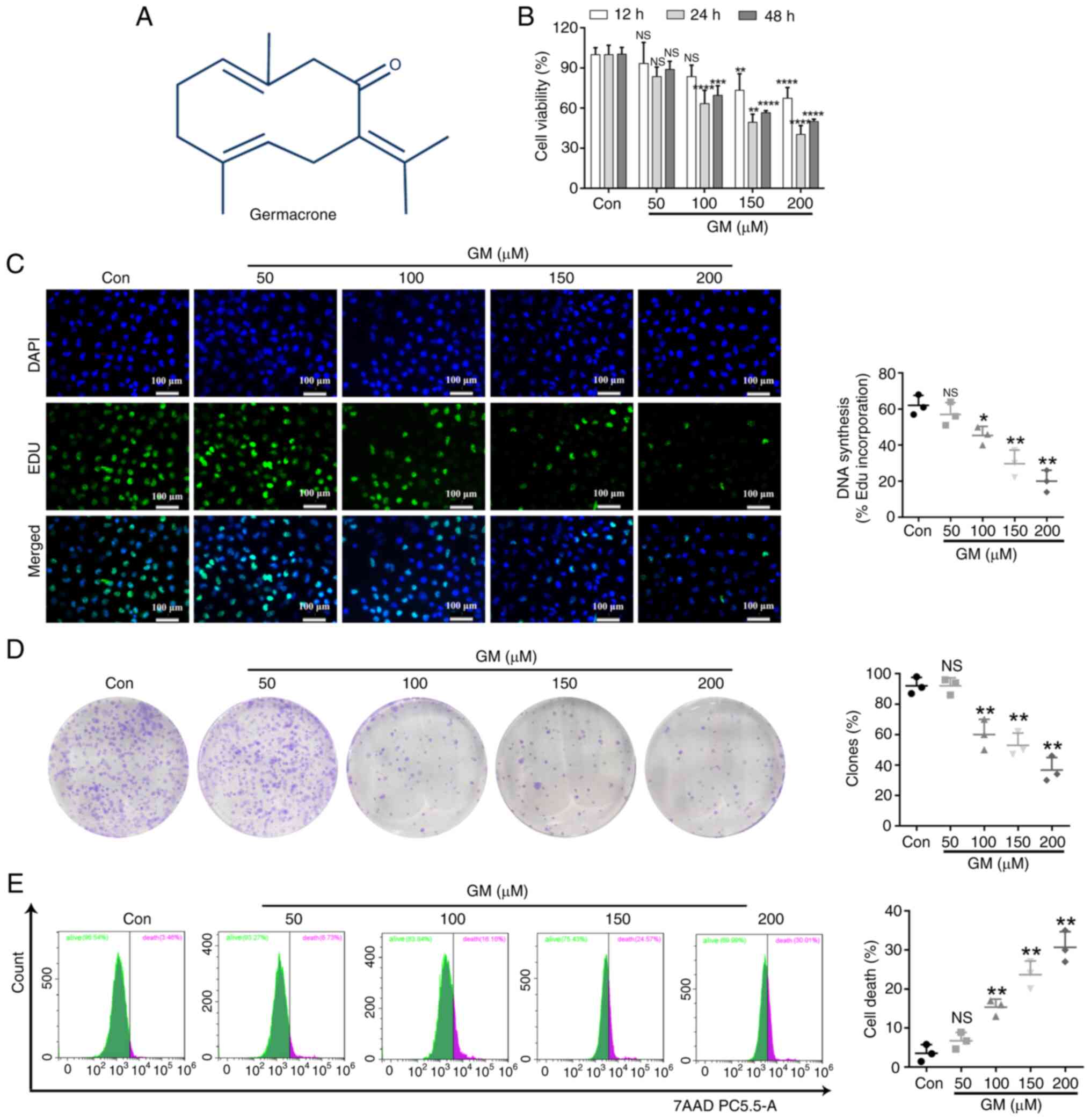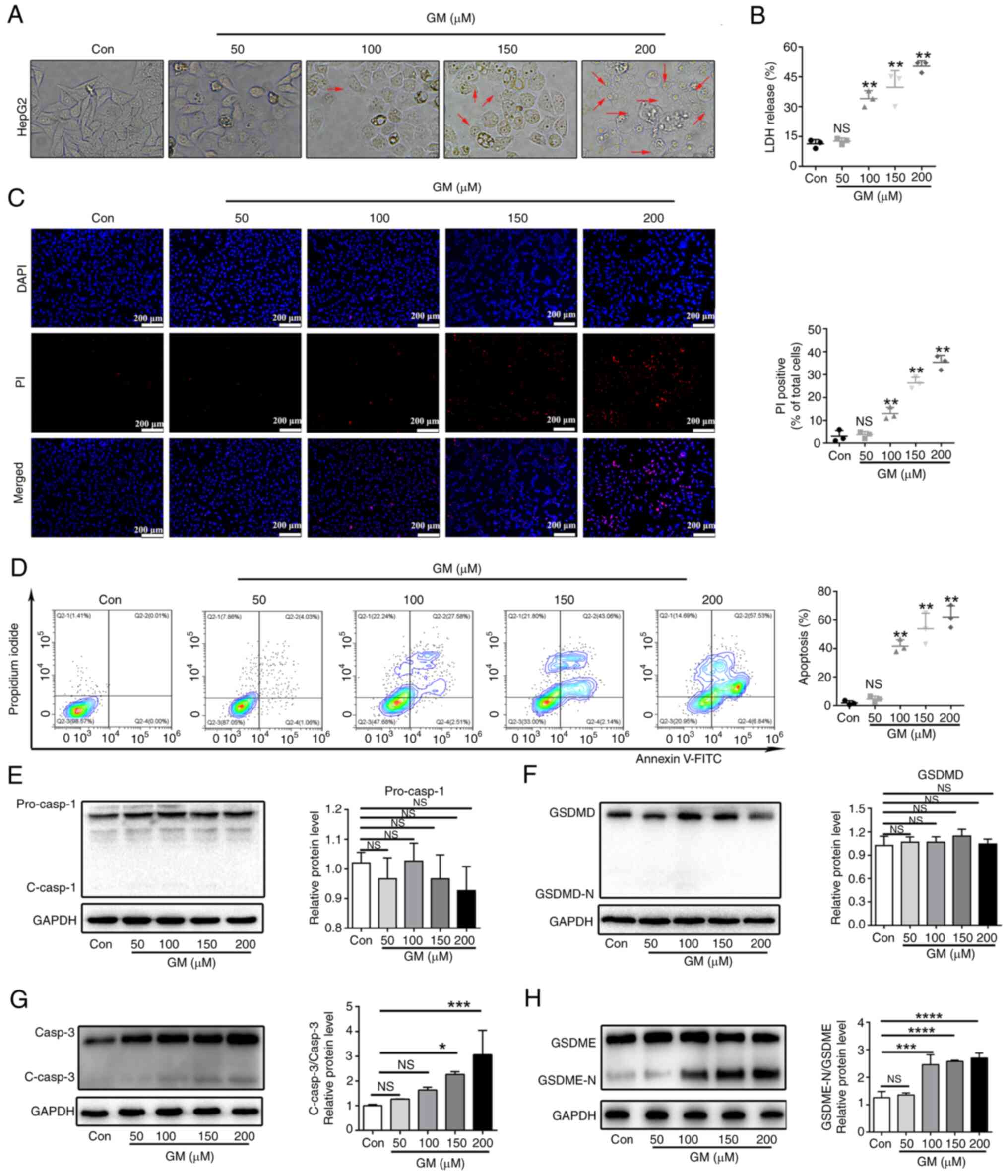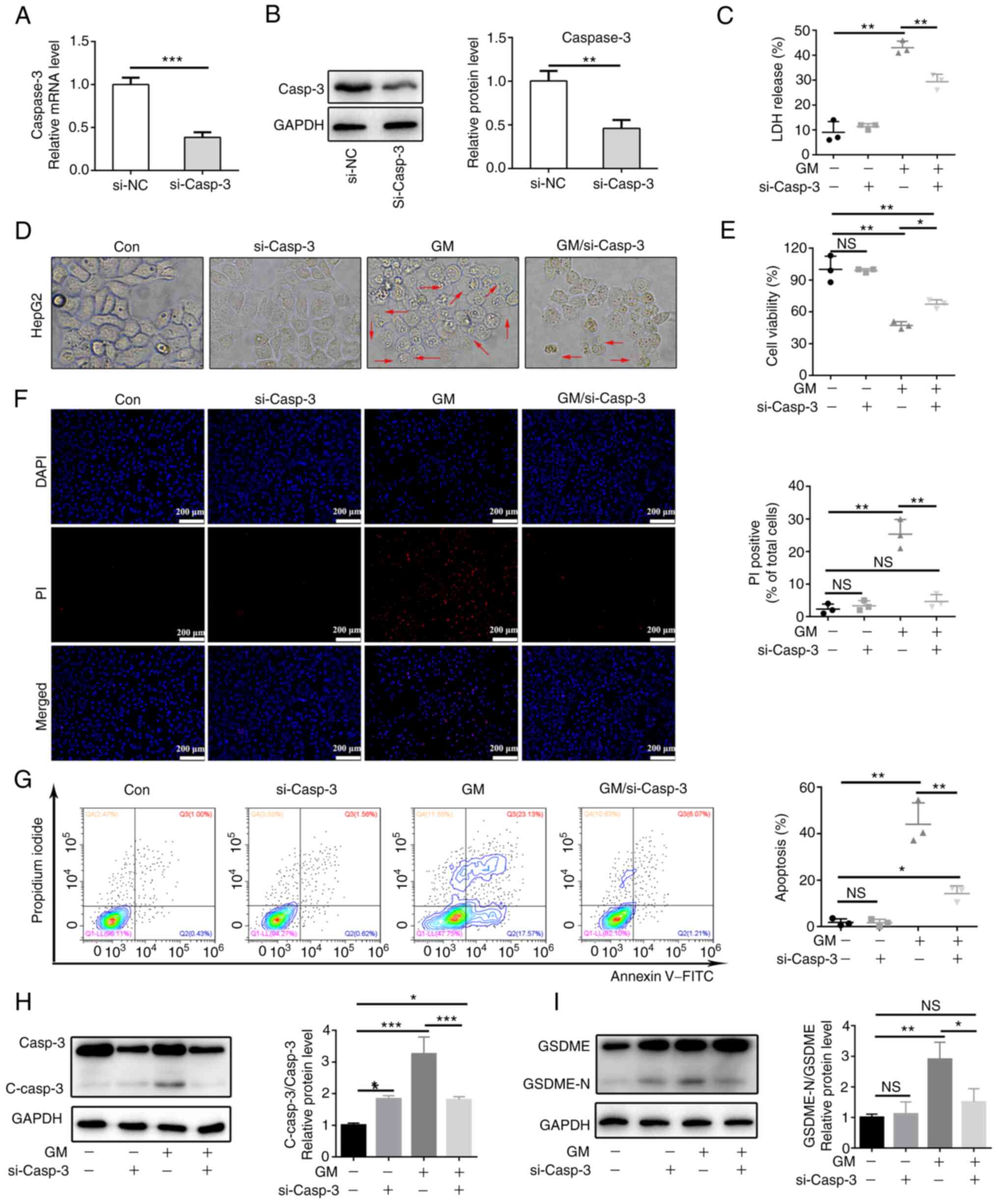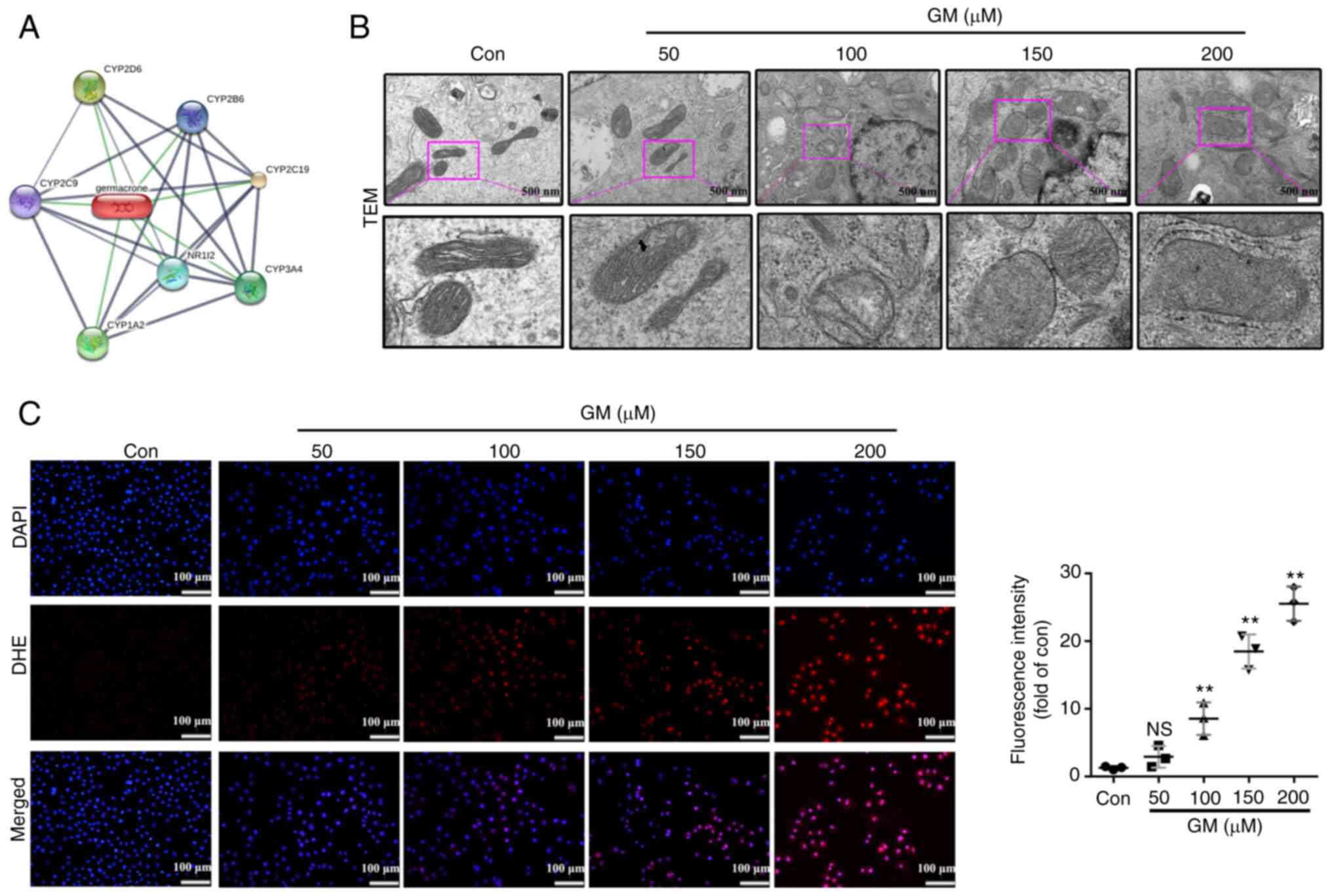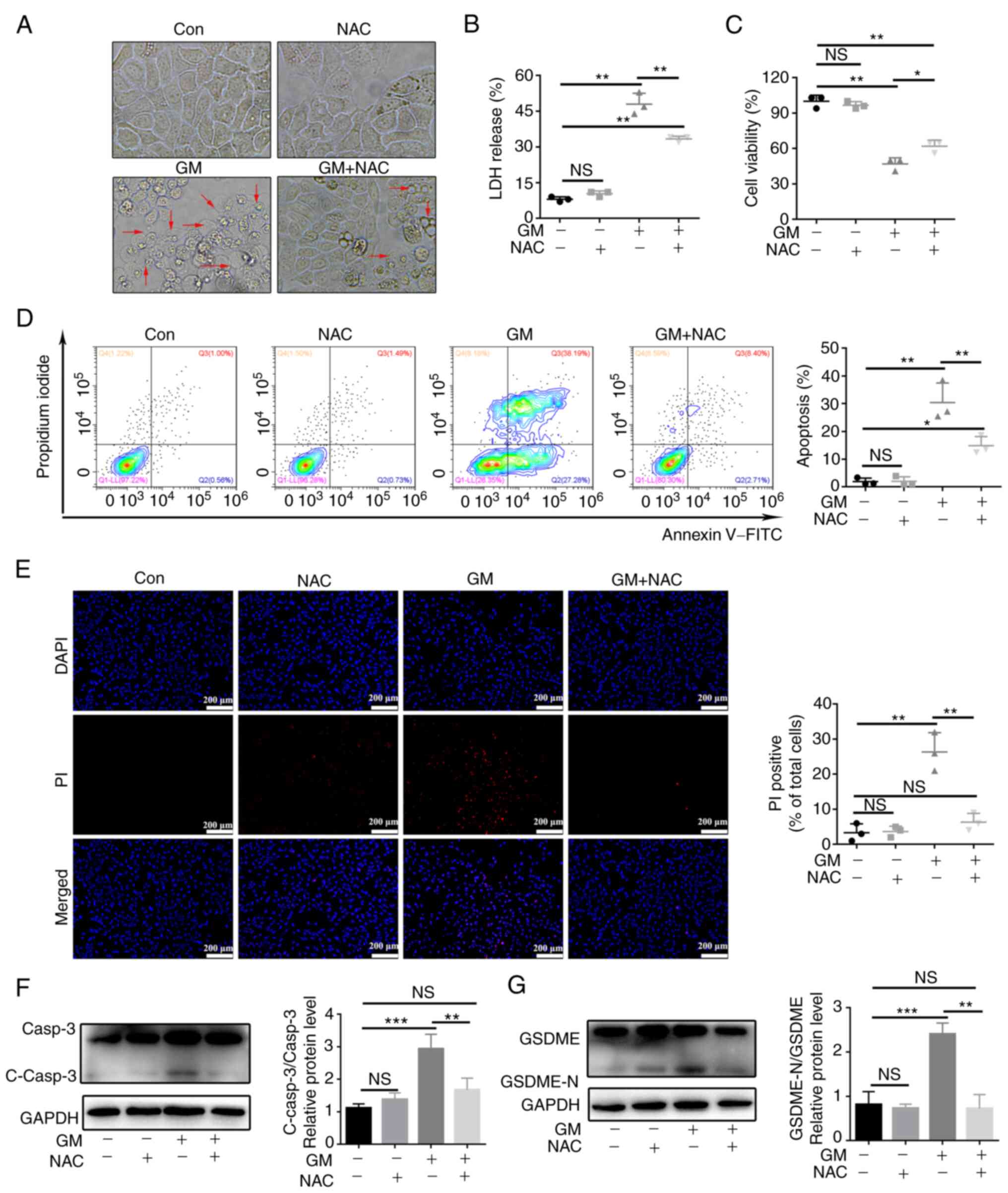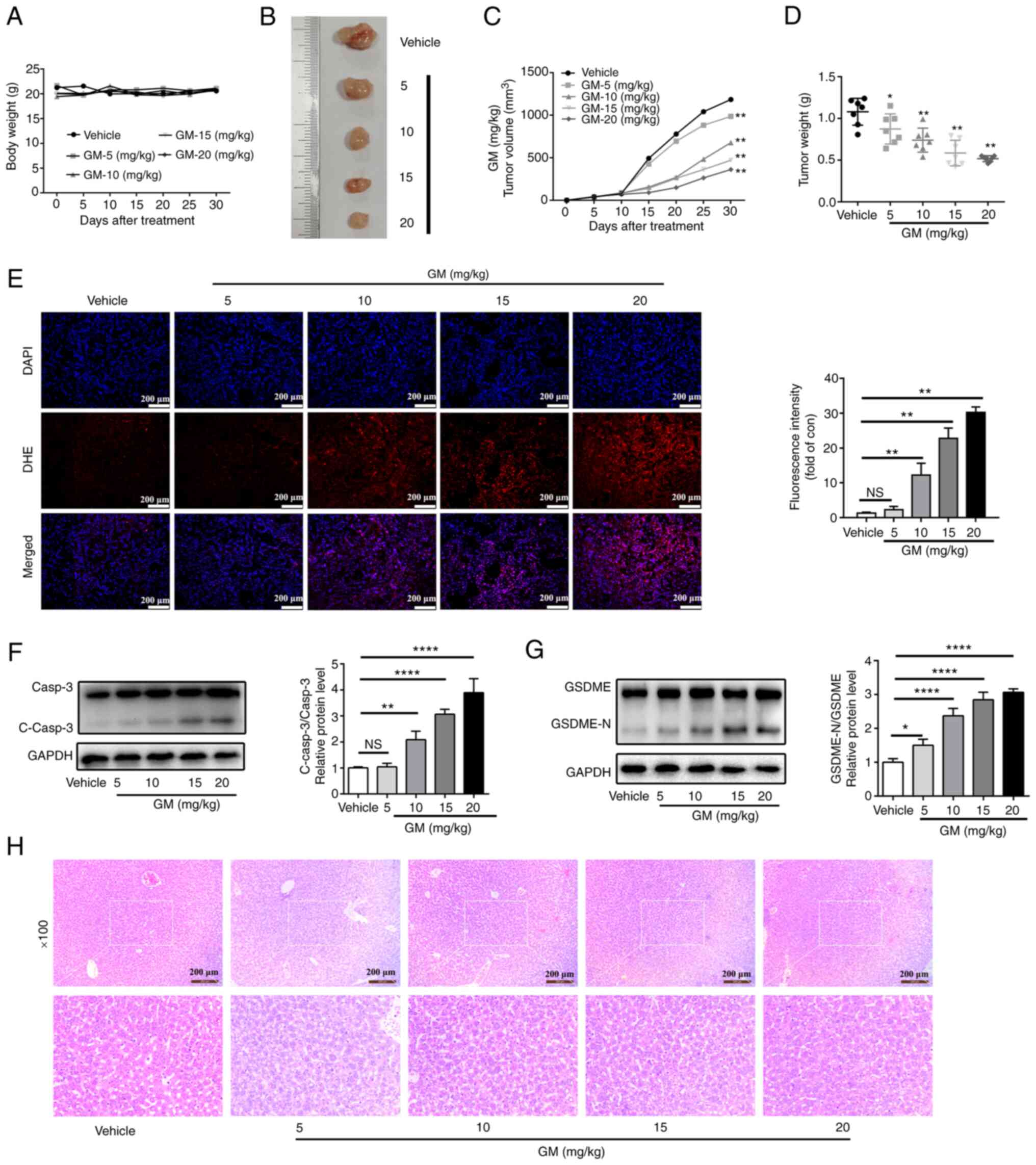|
1
|
Clark T, Maximin S, Meier J, Pokharel S
and Bhargava P: Hepatocellular carcinoma: Review of epidemiology,
screening, imaging diagnosis, response assessment, and treatment.
Curr Probl Diagn Radiol. 44:479–486. 2015.PubMed/NCBI View Article : Google Scholar
|
|
2
|
Hartke J, Johnson M and Ghabril M: The
diagnosis and treatment of hepatocellular carcinoma. Semin Diagn
Pathol. 34:153–159. 2017.PubMed/NCBI View Article : Google Scholar
|
|
3
|
Sia D, Villanueva A, Friedman SL and
Llovet JM: Liver cancer cell of origin, molecular class, and
effects on patient prognosis. Gastroenterology. 152:745–761.
2017.PubMed/NCBI View Article : Google Scholar
|
|
4
|
Sung H, Ferlay J, Siegel RL, Laversanne M,
Soerjomataram I, Jemal A and Bray F: Global cancer statistics 2020:
GLOBOCAN estimates of incidence and mortality worldwide for 36
cancers in 185 countries. CA Cancer J Clin. 71:209–249.
2021.PubMed/NCBI View Article : Google Scholar
|
|
5
|
Oravecz M and Mészáros J: Traditional
Chinese medicine: Theoretical background and its use in China. Orv
Hetil. 153:723–731. 2012.PubMed/NCBI View Article : Google Scholar : (In Hungarian).
|
|
6
|
Chan HHL and Ng T: Traditional Chinese
medicine (TCM) and allergic diseases. Curr Allergy Asthma Rep.
20(67)2020.PubMed/NCBI View Article : Google Scholar
|
|
7
|
Zhou P: Traditional Chinese medicine. Comb
Chem High Throughput Screen. 13(836)2010.PubMed/NCBI View Article : Google Scholar
|
|
8
|
Momenkiaei F and Raofie F: Preparation of
Curcuma longa L. extract nanoparticles using supercritical solution
expansion. J Pharm Sci. 108:1581–1589. 2019.PubMed/NCBI View Article : Google Scholar
|
|
9
|
Dosoky NS and Setzer WN: Chemical
composition and biological activities of essential oils of
Curcuma species. Nutrients. 10(1196)2018.PubMed/NCBI View Article : Google Scholar
|
|
10
|
Sun J, Chen F, Braun C, Zhou YQ, Rittner
H, Tian YK, Cai XY and Ye DW: Role of curcumin in the management of
pathological pain. Phytomedicine. 48:129–140. 2018.PubMed/NCBI View Article : Google Scholar
|
|
11
|
Ayati Z, Ramezani M, Amiri MS, Moghadam
AT, Rahimi H, Abdollahzade A, Sahebkar A and Emami SA: Ethnobotany,
phytochemistry and traditional uses of Curcuma spp. and
pharmacological profile of two important species (C. longa and C.
zedoaria): A review. Curr Pharm Des. 25:871–935. 2019.PubMed/NCBI View Article : Google Scholar
|
|
12
|
Li Y, Wu Y, Li Y and Guo F: Review of the
traditional uses, phytochemistry, and pharmacology of Curcuma
wenyujin Y. H. Chen et C. Ling. J Ethnopharmacol.
269(113689)2021.PubMed/NCBI View Article : Google Scholar
|
|
13
|
Dosoky NS, Satyal P and Setzer WN:
Variations in the volatile compositions of Curcuma species.
Foods. 8(53)2019.PubMed/NCBI View Article : Google Scholar
|
|
14
|
Goel A and Aggarwal BB: Curcumin, the
golden spice from Indian saffron, is a chemosensitizer and
radiosensitizer for tumors and chemoprotector and radioprotector
for normal organs. Nutr Cancer. 62:919–930. 2010.PubMed/NCBI View Article : Google Scholar
|
|
15
|
Giordano A and Tommonaro G: Curcumin and
cancer. Nutrients. 11(2376)2019.PubMed/NCBI View Article : Google Scholar
|
|
16
|
Burapan S, Kim M, Paisooksantivatana Y,
Eser BE and Han J: Thai Curcuma species: Antioxidant and
bioactive compounds. Foods. 9(1219)2020.PubMed/NCBI View Article : Google Scholar
|
|
17
|
Srivilai J, Waranuch N, Tangsumranjit A,
Khorana N and Ingkaninan K: Germacrone and sesquiterpene-enriched
extracts from Curcuma aeruginosa Roxb. Increase skin penetration of
minoxidil, a hair growth promoter. Drug Deliv Transl Res.
8:140–149. 2018.PubMed/NCBI View Article : Google Scholar
|
|
18
|
Liu Y, Wang W, Fang B, Ma F, Zheng Q, Deng
P, Zhao S, Chen M, Yang G and He G: Anti-tumor effect of germacrone
on human hepatoma cell lines through inducing G2/M cell cycle
arrest and promoting apoptosis. Eur J Pharmacol. 698:95–102.
2013.PubMed/NCBI View Article : Google Scholar
|
|
19
|
Riaz A, Rasul A, Kanwal N, Hussain G, Shah
MA, Sarfraz I, Ishfaq R, Batool R, Rukhsar F and Adem Ş:
Germacrone: A potent secondary metabolite with therapeutic
potential in metabolic diseases, cancer and viral infections. Curr
Drug Metab. 21:1079–1090. 2020.PubMed/NCBI View Article : Google Scholar
|
|
20
|
Zhang R, Hao J, Guo K, Liu W, Yao F, Wu Q,
Liu C, Wang Q and Yang X: Germacrone inhibits cell proliferation
and induces apoptosis in human esophageal squamous cell carcinoma
cells. Biomed Res Int. 2020(7643248)2020.PubMed/NCBI View Article : Google Scholar
|
|
21
|
Kovacs SB and Miao EA: Gasdermins:
Effectors of pyroptosis. Trends Cell Biol. 27:673–684.
2017.PubMed/NCBI View Article : Google Scholar
|
|
22
|
Shi J, Gao W and Shao F: Pyroptosis:
Gasdermin-mediated programmed necrotic cell death. Trends Biochem
Sci. 42:245–254. 2017.PubMed/NCBI View Article : Google Scholar
|
|
23
|
Jia C, Chen H, Zhang J, Zhou K, Zhuge Y,
Niu C, Qiu J, Rong X, Shi Z, Xiao J, et al: Role of pyroptosis in
cardiovascular diseases. Int Immunopharmacol. 67:311–318.
2019.PubMed/NCBI View Article : Google Scholar
|
|
24
|
Shi J, Zhao Y, Wang K, Shi X, Wang Y,
Huang H, Zhuang Y, Cai T, Wang F and Shao F: Cleavage of GSDMD by
inflammatory caspases determines pyroptotic cell death. Nature.
526:660–665. 2015.PubMed/NCBI View Article : Google Scholar
|
|
25
|
Sun L, Ma W, Gao W, Xing Y, Chen L, Xia Z,
Zhang Z and Dai Z: Propofol directly induces caspase-1-dependent
macrophage pyroptosis through the NLRP3-ASC inflammasome. Cell
Death Dis. 10(542)2019.PubMed/NCBI View Article : Google Scholar
|
|
26
|
Wang Y, Gao W, Shi X, Ding J, Liu W, He H,
Wang K and Shao F: Chemotherapy drugs induce pyroptosis through
caspase-3 cleavage of a gasdermin. Nature. 547:99–103.
2017.PubMed/NCBI View Article : Google Scholar
|
|
27
|
Jiang M, Qi L, Li L and Li Y: The
caspase-3/GSDME signal pathway as a switch between apoptosis and
pyroptosis in cancer. Cell Death Discov. 6(112)2020.PubMed/NCBI View Article : Google Scholar
|
|
28
|
Liang WF, Gong YX, Li HF, Sun FL, Li WL,
Chen DQ, Xie DP, Ren CX, Guo XY, Wang ZY, et al: Curcumin activates
ROS signaling to promote pyroptosis in hepatocellular carcinoma
HepG2 cells. In Vivo. 35:249–257. 2021.PubMed/NCBI View Article : Google Scholar
|
|
29
|
Zhang X, Zhang P, An L, Sun N, Peng L,
Tang W, Ma D and Chen J: Miltirone induces cell death in
hepatocellular carcinoma cell through GSDME-dependent pyroptosis.
Acta Pharm Sin B. 10:1397–1413. 2020.PubMed/NCBI View Article : Google Scholar
|
|
30
|
Livak KJ and Schmittgen TD: Analysis of
relative gene expression data using real-time quantitative PCR and
the 2(-Delta Delta C(T)) method. Methods. 25:402–408.
2001.PubMed/NCBI View Article : Google Scholar
|
|
31
|
Zhan ZY, Wu M, Shang Y, Jiang M, Liu J,
Qiao CY, Ye H, Lin YC, Piao MH, Sun RH, et al: Taxifolin ameliorate
high-fat-diet feeding plus acute ethanol binge-induced
steatohepatitis through inhibiting inflammatory caspase-1-dependent
pyroptosis. Food Funct. 12:362–372. 2021.PubMed/NCBI View Article : Google Scholar
|
|
32
|
Yu J, Li S, Qi J, Chen Z, Wu Y, Guo J,
Wang K, Sun X and Zheng J: Cleavage of GSDME by caspase-3
determines lobaplatin-induced pyroptosis in colon cancer cells.
Cell Death Dis. 10(193)2019.PubMed/NCBI View Article : Google Scholar
|
|
33
|
Kleih M, Böpple K, Dong M, Gaißler A,
Heine S, Olayioye MA, Aulitzky WE and Essmann F: Direct impact of
cisplatin on mitochondria induces ROS production that dictates cell
fate of ovarian cancer cells. Cell Death Dis.
10(851)2019.PubMed/NCBI View Article : Google Scholar
|
|
34
|
Li Q, Liang X, Yang Y, Zeng X, Zhong X and
Huang C: Panax notoginseng saponins ameliorate cisplatin-induced
mitochondrial injury via the HIF-1α/mitochondria/ROS pathway. FEBS
Open Bio. 10:118–126. 2020.PubMed/NCBI View Article : Google Scholar
|
|
35
|
Mazat JP, Devin A and Ransac S: Modelling
mitochondrial ROS production by the respiratory chain. Cell Mol
Life Sci. 77:455–465. 2020.PubMed/NCBI View Article : Google Scholar
|
|
36
|
Li Q, Shi N, Cai C, Zhang M, He J, Tan Y
and Fu W: The role of mitochondria in pyroptosis. Front Cell Dev
Biol. 8(630771)2021.PubMed/NCBI View Article : Google Scholar
|
|
37
|
Wang K, Sun Q, Zhong X, Zeng M, Zeng H,
Shi X, Li Z, Wang Y, Zhao Q, Shao F and Ding J: Structural
mechanism for GSDMD targeting by autoprocessed caspases in
pyroptosis. Cell. 180:941–955.e20. 2020.PubMed/NCBI View Article : Google Scholar
|
|
38
|
Wu LS, Liu Y, Wang XW, Xu B, Lin YL, Song
Y, Dong Y, Liu JL, Wang XJ, Liu S, et al: LPS enhances the
chemosensitivity of oxaliplatin in HT29 cells via GSDMD-mediated
pyroptosis. Cancer Manag Res. 12:10397–10409. 2020.PubMed/NCBI View Article : Google Scholar
|
|
39
|
An H, Heo JS, Kim P, Lian Z, Lee S, Park
J, Hong E, Pang K, Park Y, Ooshima A, et al: Tetraarsenic hexoxide
enhances generation of mitochondrial ROS to promote pyroptosis by
inducing the activation of caspase-3/GSDME in triple-negative
breast cancer cells. Cell Death Dis. 12(159)2021.PubMed/NCBI View Article : Google Scholar
|
|
40
|
Zhao Y, Cai J, Shi K, Li H, Du J, Hu D,
Liu Z and Wang W: Germacrone induces lung cancer cell apoptosis and
cell cycle arrest via the Akt/MDM2/p53 signaling pathway. Mol Med
Rep. 23(452)2021.PubMed/NCBI View Article : Google Scholar
|
|
41
|
Zhong Z, Chen X, Tan W, Xu Z, Zhou K, Wu
T, Cui L and Wang Y: Germacrone inhibits the proliferation of
breast cancer cell lines by inducing cell cycle arrest and
promoting apoptosis. Eur J Pharmacol. 667:50–55. 2011.PubMed/NCBI View Article : Google Scholar
|
|
42
|
Fang X, Tan T, Gao B, Zhao Y, Liu T and
Xia Q: Germacrone regulates HBXIP-mediated cell cycle, apoptosis
and promotes the formation of autophagosomes to inhibit the
proliferation of gastric cancer cells. Front Oncol.
10(537322)2020.PubMed/NCBI View Article : Google Scholar
|
|
43
|
Liu YY, Zheng Q, Fang B, Wang W, Ma FY,
Roshan S, Banafa A, Chen MJ, Chang JL, Deng XM, et al: Germacrone
induces apoptosis in human hepatoma HepG2 cells through inhibition
of the JAK2/STAT3 signalling pathway. J Huazhong Univ Sci Technolog
Med Sci. 33:339–345. 2013.PubMed/NCBI View Article : Google Scholar
|
|
44
|
Cui Y, Peng Y, Zhang Q, Xia S, Ruan B, Xu
Q, Yu X, Zhou T, Liu H, Zeng D, et al: Disruption of EARLY LESION
LEAF 1, encoding a cytochrome P450 monooxygenase, induces ROS
accumulation and cell death in rice. Plant J. 105:942–956.
2021.PubMed/NCBI View Article : Google Scholar
|
|
45
|
He L, He T, Farrar S, Ji L, Liu T and Ma
X: Antioxidants maintain cellular redox homeostasis by elimination
of reactive oxygen species. Cell Physiol Biochem. 44:532–553.
2017.PubMed/NCBI View Article : Google Scholar
|
|
46
|
Lu Y and Cederbaum AI: Cytochrome P450s
and alcoholic liver disease. Curr Pharm Des. 24:1502–1517.
2018.PubMed/NCBI View Article : Google Scholar
|
|
47
|
Chien Y, Rosal K and Chung BC: Function of
CYP11A1 in the mitochondria. Mol Cell Endocrinol. 441:55–61.
2017.PubMed/NCBI View Article : Google Scholar
|
|
48
|
Peter Guengerich F and Avadhani NG: Roles
of cytochrome P450 in metabolism of ethanol and carcinogens. Adv
Exp Med Biol. 1032:15–35. 2018.PubMed/NCBI View Article : Google Scholar
|
|
49
|
Guengerich FP: Cytochrome P450 2E1 and its
roles in disease. Chem Biol Interact. 322(109056)2020.PubMed/NCBI View Article : Google Scholar
|
|
50
|
Zhou B, Zhang JY, Liu XS, Chen HZ, Ai YL,
Cheng K, Sun RY, Zhou D, Han J and Wu Q: Tom20 senses
iron-activated ROS signaling to promote melanoma cell pyroptosis.
Cell Res. 28:1171–1185. 2018.PubMed/NCBI View Article : Google Scholar
|















